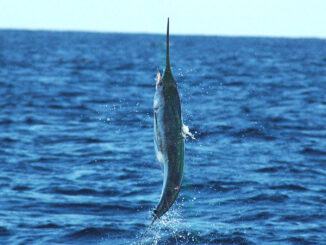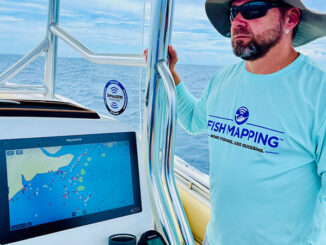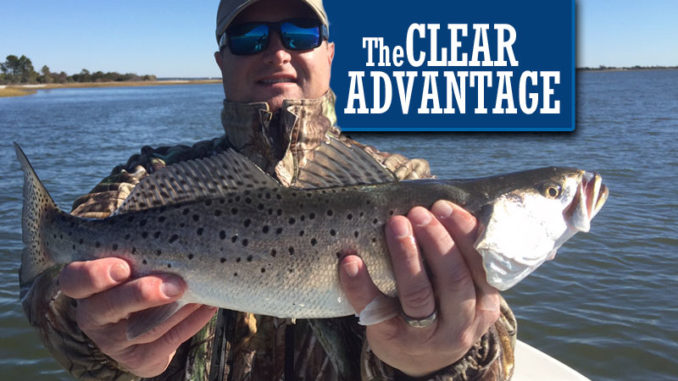
Look for the cleanest water around when you head out in search of speckled trout as fall gives way to winter.
All cylinders fire in the Carolinas when offshore and inshore fisheries take off at the end of fall. Offshore waters are dominated by massive grouper, line-stretching tuna and reel-screaming wahoo; the inshore grounds teem with redfish and the Carolinas’ most-coveted species, the speckled trout.
These yellow-mouthed brutes live in Carolina waters year-round, and the best fishing is typically between the beginning of fall and at the end of the spring, when the water is cool and clear. Anglers looking for constant speck action need to target clear water and use appropriate tactics.
Tiny organisms like algae and other types of marine life in microscopic packages play into the dirty water game, and the mud, silt and sand disturbed by wind and heavy tidal currents water clarity. Storms, heavy winds and rains degrade water quality as well. Without them, water would remain clear all the time. Anglers can cure this problem by cranking up and making a move to a different part of the estuary, a different inlet or a different time when tidal conditions permit better water conditions.
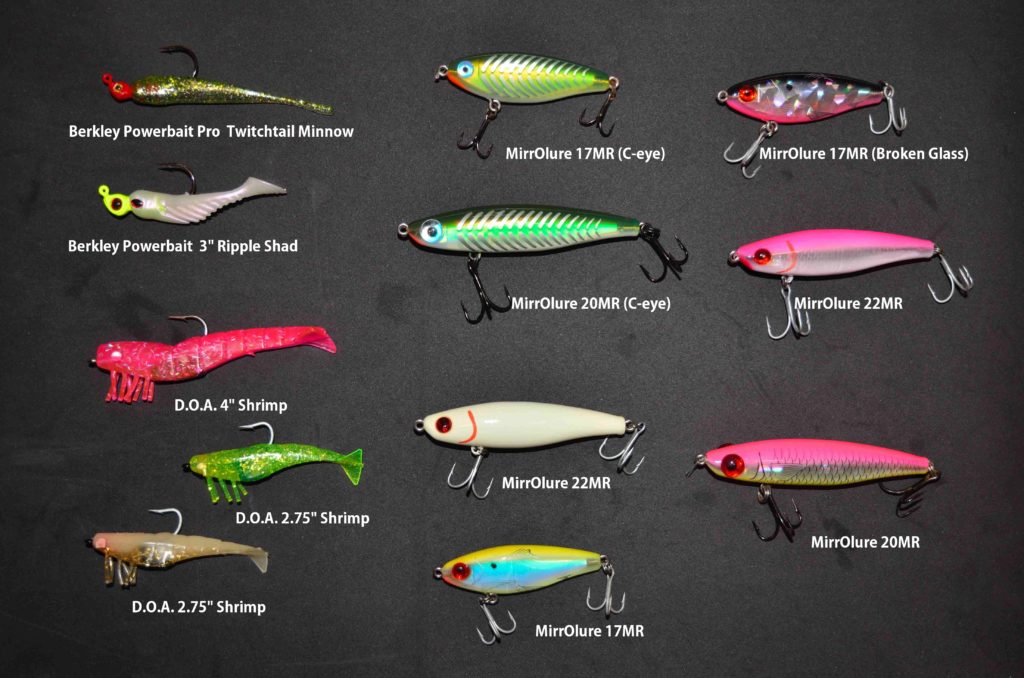
In addition, water clarity is directly affected by tidal intensity. Typically, tides will range from a 41/2- to a 61/2-foot range, depending on the lunar phase. In the Carolinas, the time between the high tide and low tide is generally slightly less than six hours. On bigger tides, more water rises or falls during the same amount of time. The bigger tides produces heavier current that carry more suspended sediment and lead to turbid waters. Anglers can check tide cycles to see the height difference between high and low tides to determine if the water will be disturbed by a heavy current.
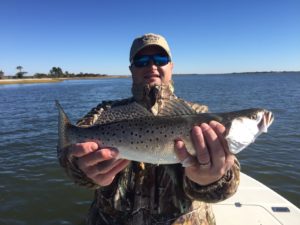
Jot Owens, a guide who calls Wrightsville Beach, N.C., home, fishes from Rich Inlet near Figure Eight Island south to the mouth of the Cape Fear River at Bald Head Island. He encounters a wide range of water conditions, and clear water is at the top of his list when he looks for a non-stop trout bite for his clients. He considers winds, tides, and past weather cycles to determine the best place to find speckled trout.
“I always look for clearer water,” said Owens (910-233-4139). “Unless the ocean is dirty, I find the clearest water at the end of the rising tide and at the start of the fall. The water gets dirty after it carries sediment out of the creeks and into the receiving waters.”
Speckled trout are voracious feeders that use their eyesight to earn a living, and clear water is almost required for trout to get enough food to fuel their metabolism.
“Trout have extremely good eyesight, and they use it to their advantage. They will chase baits from a considerable distance, unlike flounder, which don’t like to break their cover, and reds just don’t chase it very far. Trout will come from the bottom in 12 feet of water and attack baits 6 to 10 feet away.”
The colder months are the best months to catch specks, in part because the estuaries are the clearest. This is exactly the case in Wrightsville Beach, where Owens spends most of his fall season chasing speckled trout.
“Our water gets super clear from the end of October through the end of the year,” he said. “The colder it gets, the clearer the water gets.”
Because he’s been fishing Wrightsville Beach for nearly 30 years, he’s learned how to target trout in gin-clear conditions. First, Owens switches to a longer leader, 3 to 4 feet of 12- to 15-pound fluorocarbon. And he downsizes lures to 3-inch soft plastics on 1/8-ounce jigheads and small hard baits.
“MirrOdines, Berkley Powerbait Pro Twitchtail Minnow and three-inch Ripple Shad are my go-to lures in super-clear water in December,” he said.
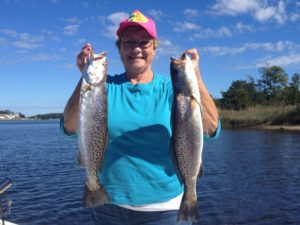
Owens prefers the smaller presentations of the 3-inch soft baits in clear water. Fish can detect these lures at great distances, and the smaller baits produces more fish than larger lures in the fall and winter. The MirrOdine, 17MR, resembles a small menhaden that suspends a few feet below the surface. It has rattles that can get a fish’s attention from great distances. Owens fishes these lures with a stop-and-go retrieve. He prefers chartreuses, pinks, silvers and pearls/whites in soft and hard baits.
“Use lighter colors in clear water and darker colors in darker water,” he said.
In clear water, you get a bonus: watching trout react to lures and baits. The greater distance a fish can see, the more likely they will bite, especially a trout. Speckled trout earn a living in clean water, and if anglers can locate these places in their neck of the woods, the fishing can produce good results. For the best luck, speckled anglers need to locate clear water and use clear water tactics to put fish in the boat.


